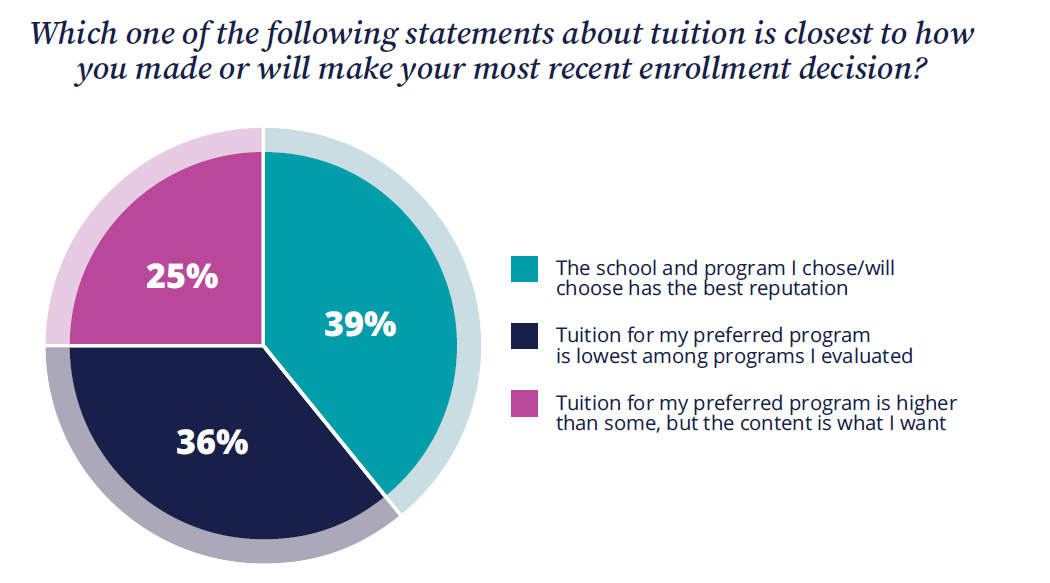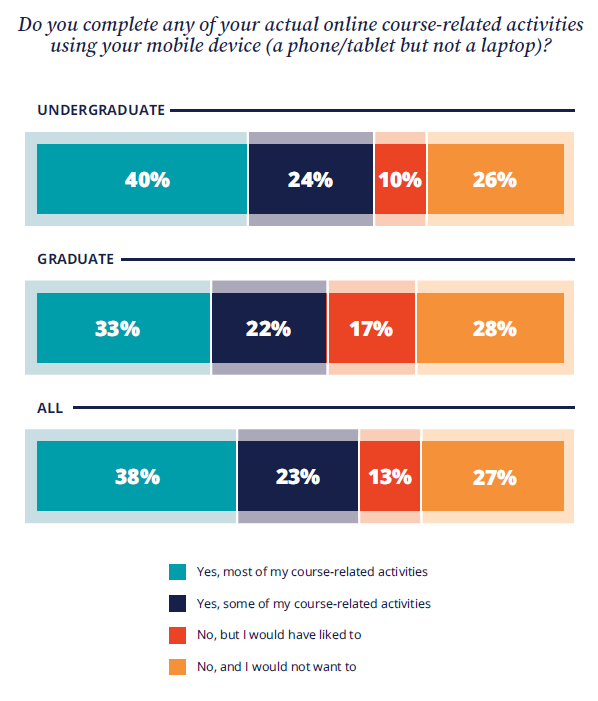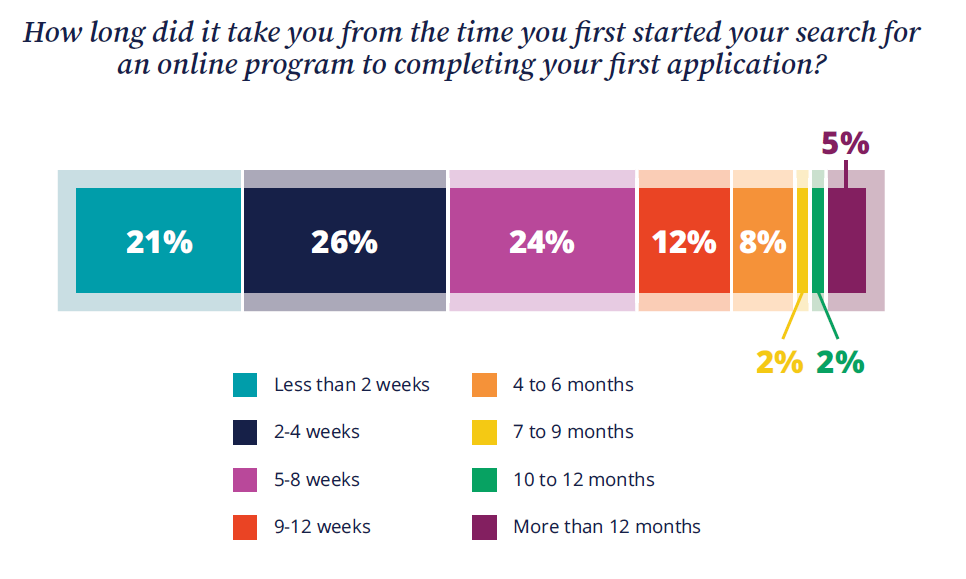With many students continuing to study remotely, this week we're covering research from Wiley Education Services on student attitudes to online learning and how the findings might help shape higher education planning for the year ahead.
The Wiley Education Services' annual Online College Students report is a culmination of market-leading insights into online learner perceptions, behaviors, and the evolving online education landscape.

The findings offer a great insight into the trends, wants, and needs specific to the traditional online college student and give institutions a lot to think about when it comes to honing online programs to best cater to changing attitudes.
Here, we review the research findings and provide you with key insights that institutions could consider when creating or updating their online courses, resources, and recruitment strategies. Online programs are now an equal alternative to on-campus programs. Your competitors are no longer the institutions you've been historically focusing on, but a wider range of universities and colleges offering high-quality programs, locally and internationally. Is your digital marketing and recruitment strategy considering this change?
How is the online learning landscape changing?
The research from Wiley Education Services shows that even before the arrival of the coronavirus pandemic, there was sustained growth in online courses, with competition continuing to rise as more institutions launch online offerings. More than 70% of colleges and universities surveyed expected to launch one to four new online undergraduate programs over the following three years. With the impact of Covid-19 now putting an increased focus on remote learning, this figure has increased even further.
Despite the recent spotlight on remote learning opportunities, institutions need to keep in mind that those who are specifically interested in online learning are different from those who typically enroll in campus-based, face-to-face programs. That said, a growing number of students are considering online learning as an alternative to traditional programs, especially if it gives them more flexibility.
Unlike campus-based students, online course students are often motivated by their careers and are looking for the quickest way to achieve their goals. They put a high value on speed throughout the enrollment process and in their studies, with the research showing that 47% of online college students submit their first application within four weeks of beginning their search.
In addition, the research shows that more than half of online college students would look for a similar online program elsewhere if their online program were not available at their chosen school and would not consider enrolling in an on-campus program or pursuing another field of study at their chosen college or university.
What do students look for from online learning?

While speed in the application process and course completion is high on the list of factors that students look for in their chosen program, by far, the most important issue is cost, with just over half of students listing affordability as the most important aspect driving their course selection.
For institutions driving influence around affordability, scholarships proved popular with survey respondents, with the research showing that a $500 annual scholarship in the US could be enough to sway 26% of students to choose one school over another.
With the pandemic creating an increased focus on remote learning and remote working, we are already starting to see rapid developments in the online learning environment and the tools that are available to streamline the process. In the coming months, it will be important for institutions offering online courses to keep an eye on the latest transformations taking place that could help create efficiencies and reduce costs.
| Factor | Importance |
|---|---|
| Affordability | 51% |
| Reputation of the school/program | 36% |
| The school awarded academic credit for my work/life experience | 29% |
| Offered quickest path to a degree | 28% |
| I can take both online and on-campus courses during my program | 27% |
| Proximity to where I live or work | 22% |
| Quality of faculty | 21% |
| Had favorable admissions requirements | 15% |
| Recommendation of people I respect | 15% |
| The school's mission/values align with my values | 14% |
| Familiarity with the school | 13% |
| Positive interactions with staff during my search process | 12% |
| My employer had a relationship with the school | 11% |
| Alumni achievements | 4% |
| Something else | 2% |
Reputation has consistently been the second most important factor for online college students when selecting a school or program. This year's research shows that 36% find an institution's reputation the most important aspect when looking to enroll in a course. The research also shows that almost two-thirds of students are willing to pay more in tuition if they feel they are gaining something from it, with 39% of respondents considering that gain to be the reputation of the school.
Although they study online, many students want to visit campus or associate themselves with the institution.
Three-quarters of respondents in the Wiley Education Services survey chose a school within 50 miles of their home address. The proximity allowed more than 10% to attend on-campus sporting events and 9% stating it was participating in student activities on campus.
This bond with the campus and a desire to affiliate with the overall reputation of their institution also compels 12% of past students to donate to their alma mater, 22% of them to refer new students to the school, and more than one-third to enroll in additional courses once they complete their degree. Building on student ambassadorship and advocacy will clearly continue to be crucial in the upcoming years.
Students go mobile to study, read and participate
From a technology device perspective, the research also found that 74% of online college students wanted to use their mobile devices to help them progress through their courses no matter where they were.
Many of those surveyed used on-the-go devices to complete readings or view videos, whilst a smaller number used them to communicate with their instructors or fellow students.

These interactions with faculty or classmates are crucial to student success. With an increased uptake in 5G in 2021 allowing many more people to access a speedy internet connection on the go, it will be more important than ever for institutions to ensure their website, online learning tools and methods of communication are optimized to provide a smooth user experience on smartphones and tablets, as well as on laptops and desktops.
What motivates online students?
For institutions looking to attract prospective students to online courses, it's interesting to note that more than 90% of those surveyed as part of the Wiley Education Services research were motivated to take up an online course based on their professional objectives, and nearly half hope to use their new degrees to change their careers.
The events of the pandemic causing huge shifts in the way people work across almost every industry. The trend towards re-skilling and upskilling with online courses is something that we could see an increase in the next few years as workers look to pivot into new or slightly different job roles or boost their appeal to employers in an increasingly competitive job market.
More than 80% of institutions currently offer career services in some form for online learners, and up to half of online college students take advantage of at least one of these services. With the job market being impacted during and post-pandemic, these figures are likely to increase, making online career services even more important. Something institutions could consider building on to future-proof the effectiveness of their online courses.
What does a winning enrolment process online look like?
When it comes to the enrolment process, speed and efficiency are key, according to the research findings. More than 40% of online college students decided where to submit applications in less than a month, with 21% choosing in less than two weeks, highlighting the need for quick and thorough responses from institutions when students first reach out to them.

Financial aid and the overall financial process remain the most challenging parts of enrollment for online students to navigate. Eighteen percent of respondents noted the financial aid forms were the most challenging part of enrollment for them. An additional 18% of respondents said determining how they would pay for their education was the most challenging part.
While the research findings listed above point to a marked change in attitudes towards online learning, they also show a number of growth areas that institutions can consider when planning future marketing activity, student enrolment processes, and the online curriculum.
If you're looking to shift your online offering through technology as a result of the changing landscape or are reacting to new competitors, we'd love to hear from you in the comments and on social media. Well done Wiley on producing such an insightful report.

:format()//media/Online-learning-and-student-recruitment-RQ.png)